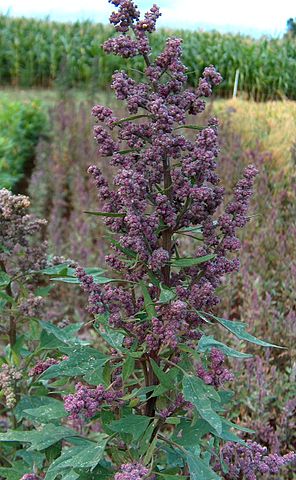The showdown between quinoa and rice is a popular topic in the world of nutrition and healthy eating. Both grains have their unique characteristics and nutritional profiles, and the choice between them depends on your dietary preferences and health goals. Let’s unveil the ultimate grain showdown between quinoa and rice:
Quinoa:
- Nutrient Density: Quinoa is often considered a superfood due to its exceptional nutrient density. It’s a complete protein, meaning it contains all nine essential amino acids, making it an excellent choice for vegetarians and vegans.

- High in Fiber: Quinoa is higher in fiber compared to white rice. Fiber supports digestion and helps maintain stable blood sugar levels.
- Rich in Vitamins and Minerals: Quinoa is a good source of vitamins and minerals, including folate, magnesium, and manganese. These nutrients contribute to overall health.
- Gluten-Free: Quinoa is naturally gluten-free, making it suitable for individuals with gluten sensitivities or celiac disease.
- Quick Cooking: Quinoa cooks faster than most types of rice, making it a convenient choice for busy individuals.
Brown Rice:
- Fiber Content: Brown rice is higher in fiber compared to white rice. It provides a slow and sustained release of energy, helping you feel full for longer.
- Complex Carbohydrates: The carbohydrates in brown rice are complex, providing a steady supply of energy and helping to control blood sugar levels.
- Low in Fat: Brown rice is low in fat, particularly saturated fat, which is a heart-healthy feature.
- Rich in Vitamins and Minerals: Brown rice is a good source of B vitamins, such as thiamine and niacin, as well as minerals like magnesium and phosphorus.
- Versatility: Brown rice can be used in a wide range of dishes, including stir-fries, pilafs, and casseroles.
Choosing Between Quinoa and Rice:
- Protein: If you’re looking for a grain with a higher protein content, quinoa is the winner. It’s a great choice for vegetarians and vegans.
- Fiber: Both quinoa and brown rice are high in fiber, but quinoa might have a slight edge in this regard.
- Gluten Sensitivity: If you have gluten sensitivity or celiac disease, quinoa is a safe option, as it’s naturally gluten-free.
- Taste and Texture: Quinoa has a nuttier flavor and slightly crunchy texture, while brown rice has a mild, slightly chewy texture. The choice may come down to personal preference and the specific dish you’re preparing.
- Quick Meals: Quinoa’s shorter cooking time can be a benefit if you’re short on time for meal preparation.
- Cost: Brown rice is generally more budget-friendly compared to quinoa, which can be more expensive.
Conclusion:
Ultimately, the choice between quinoa and brown rice depends on your dietary needs and preferences. Both grains are nutritious and can be part of a balanced diet. If you’re aiming for higher protein content and nutrient density, quinoa is an excellent choice. If you prefer a more budget-friendly option with a slightly different texture, brown rice is a great staple. You can also enjoy the benefits of both grains by incorporating them into different meals to diversify your diet.











